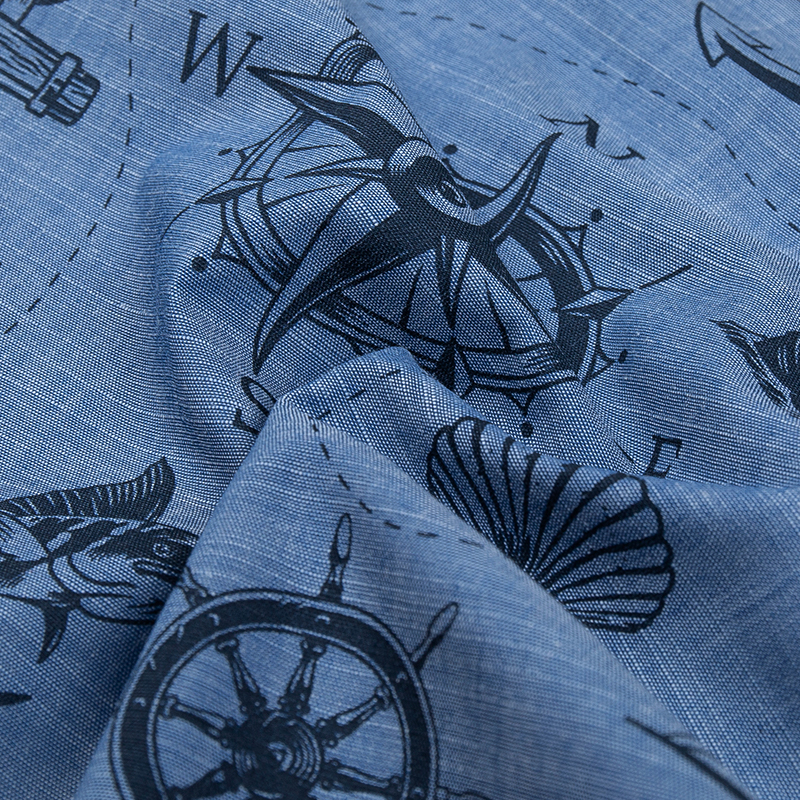From the vibrant patterns adorning traditional garments to the intricate designs gracing contemporary couture, printed fabric has woven its way through the annals of human history, leaving behind a rich tapestry of culture, innovation, and creativity. Tracing its origins reveals a journey spanning millennia, marked by technological advancements, cultural exchange, and artistic expression.
Ancient Beginnings: The roots of printed fabric can be unearthed in the ancient civilizations of Egypt, China, India, and Mesopotamia. Millennia ago, artisans in these cultures pioneered techniques such as block printing, stencil printing, and resist dyeing to embellish textiles with geometric motifs, floral patterns, and narrative scenes. These early fabrics not only adorned the bodies of ancient peoples but also served as canvases for storytelling and cultural expression.
Medieval Marvels: As the medieval era dawned, the art of textile printing flourished across Europe. In bustling marketplaces and royal workshops, skilled craftsmen refined block printing methods, using intricately carved wooden blocks to transfer intricate designs onto fabric. This period witnessed the rise of textile centers in cities like Florence and Lyon, where sumptuous silks and luxurious velvets adorned with exquisite prints became coveted commodities among nobility and clergy alike.

Industrial Revolution: The advent of the printing press in the 15th century heralded a new era of mass production for printed fabrics. Innovations in machinery and manufacturing techniques enabled textile producers to meet the growing demand for affordable, stylish garments and furnishings. Roller printing, a mechanical process utilizing engraved cylinders, revolutionized the industry, paving the way for the widespread availability of printed textiles to consumers of all social strata.
Modern Marvels: The 19th and 20th centuries witnessed a flurry of advancements in textile printing technology. Screen printing, a versatile method capable of rendering intricate designs with precision, gained popularity among artists and designers. Meanwhile, the development of synthetic dyes and digital printing techniques expanded the palette of possibilities, allowing for vivid hues and photorealistic imagery on fabric. From the psychedelic prints of the 1960s to the high-definition designs of the digital age, printed fabric continued to evolve as a medium for self-expression and style.
Contemporary Trends: In the 21st century, printed fabric remains as relevant and diverse as ever. The democratization of design tools and the rise of e-commerce platforms have empowered independent artists and designers to create and distribute their own custom prints. Sustainability has also emerged as a driving force in the industry, with a growing emphasis on eco-friendly materials and production practices. Today, printed fabric transcends boundaries, blending cultural heritage with contemporary aesthetics to adorn clothing, accessories, home furnishings, and beyond.
The story of printed fabric is a testament to human ingenuity, creativity, and craftsmanship. From its humble origins in ancient civilizations to its global presence in the digital age, printed fabric has endured as a medium of artistic expression and cultural exchange. As we continue to navigate the currents of fashion and technology, one thing remains certain: the timeless allure of printed fabric will continue to captivate and inspire generations to come.



 English
English Español
Español May 16,2024
May 16,2024














 +86-519-86503571
+86-519-86503571
 Phone: +86-13218666905
Phone: +86-13218666905 Tel: +86-0519-86503571
Tel: +86-0519-86503571 Fax: +86-0519-86508551
Fax: +86-0519-86508551 E-mail:
E-mail: 